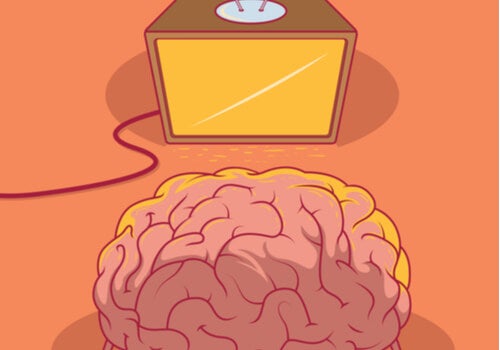You like to think that you’re a rational being and that you make decisions freely and carefully. However, this desire is far from fulfilled. That’s because unconscious processes often come into play in your decision-making, particularly when it comes to buying things. In fact, neuromarketing strategies exploit this blind spot to influence your purchasing decisions. We’re going to talk about some of the most used strategies in this field.
Every campaign and advertising strategy seeks to arouse the attention of the consumer and persuade them to buy the product or service that’s on offer. This process is optimized thanks to neuromarketing. It takes into account what stimuli and tactics produce the neurological and emotional responses that lead a customer to make a purchase. There are various strategies and applications used in the field of neuromarketing. You probably already know of a couple.
Neuromarketing strategies applied to sales
For a sales process to be successful, it’s not enough to publicize the characteristics of what’s on offer. In fact, it’s necessary to know the consumer and understand their thoughts, emotions, and decisions.
Why do you choose one product and not another, what motivates you, what drives you, and how do you respond to all the information provided? Having the answers to these questions is extremely valuable for those who want to make sales. Neuromarketing offers the answers.
Let’s look at some of the most commonly used strategies.
1. Engaging the senses
To capture the consumer’s attention, it’s important to involve the senses and do it in an appropriate way. Sight is the main means of stimulation. It allows the customer’s attention to be captured and forces them to process a greater amount of information.
For this reason, the visual aspect of the packaging, the brand image, or the preparation of advertisements or web pages is important. There are several aspects to be taken into account. For example:
- The psychology of color allows the advertiser to understand what emotions each tone generates in the individual. They can use them at their convenience.
- The typography, when it’s simple, helps the customer clearly read the message. On the contrary, if the text is more complex, the customer spends more time interacting with the product.
- Organic shapes are preferred by the brain compared to geometric ones, so using them can provide an advantage.
The rest of the senses also have a lot to contribute. For instance, a catchy tune associated with a brand or a certain smell when walking into a store can influence a customer’s purchase decision.
2. Appealing to the emotional brain
Although you think that you decide rationally, the truth is that you do so with your emotional brain. For this reason, neuromarketing strategies that appeal to emotions (generating nostalgia, fear, anger, desire, etc) are extremely effective.
In addition, resorting to empathy (creating characters or telling stories with which the consumer can identify) also gives really good results.
3. Creating a feeling of belonging and drawing on social identity
The sense of belonging is a basic human need. Indeed, we yearn for and enjoy the feeling that we’re part of a group. For this reason, many brands focus on getting users to identify with a series of values associated with their product or image.
Thus, by belonging to this group, the consumer feels special and important, and they identify with the proposed culture or philosophy. This generates feelings of loyalty in them.
4. Playing with the price
The price is one of the most relevant aspects of the sales process since it activates the cerebral insula (related to painful events). A poorly adjusted price can lead to the customer rejecting the purchase for this very reason. That’s because they don’t perceive that the cost corresponds to the value on offer.
However, if the product is shown before the price, it can mitigate this particular effect. Therefore, the customer views the cost as more acceptable.
In addition, it’s well known that round numbers are less appropriate if a price is to be accepted. For example, 19.90 or 19.99 will always generate more receptivity than 20. For this reason, most stores and companies use this strategy.
5. Opting for scarcity and exclusivity
Online stores frequently stimulate consumption by creating the feeling that a product is exclusive and scarce. This makes it more likely that the customer will feel an urge to acquire it, thus precipitating their decision to buy.
Companies achieve this effect by generating the idea that the service or product isn’t available to everyone. It could be because of its price, that there are limited quotas, or because there are only a few of them left.

Learn neuromarketing strategies to make smart decisions
These are just some of the strategies that neuromarketing offers when it comes to sales. Obviously, you can’t be fully aware of all the brain processes that take place when a product catches your attention or when you decide to buy it. However, knowing how your mind works will help you not to get carried away so easily.
Paying attention to the different kinds of mental persuasion and selling techniques used in the field of neuromarketing will at least make you more aware of why you make decisions as you do. On the other hand, if you’re on the other side and want to increase your sales, they might prove to be really useful to you.
The post Five Neuromarketing Strategies That Make You Buy appeared first on Exploring your mind.



















Comments